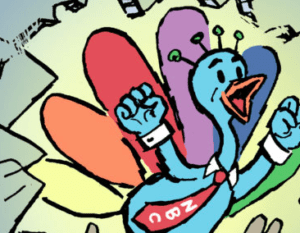 “Data-Driven Thinking” is written by members of the media community and contains fresh ideas on the digital revolution in media.
“Data-Driven Thinking” is written by members of the media community and contains fresh ideas on the digital revolution in media.
Today’s column is written by Kathy Leake, CEO at Qualia.
Buyers and sellers agree that ad impression fraud is a huge issue. Yet no one has agreed on how to define, identify and counter fraud, mostly because there is no explicit standard of what constitutes fraud.
Buyers are getting wise and hiring third parties to help determine fraud percentages on various networks and sites. But they’re often left with nothing better than a percentage guaranteed as “fraud-free” when they request an accounting remedy from any given publisher. Depending on which third party is hired, fraud terminologies differ. With the differences in language and technology, the identification of when fraud actually occurs also varies.
This ambiguity is a huge problem. It leaves wiggle room for sellers and leaves buyers in the dark about exactly what they are policing or demanding from the third parties they’ve retained to police the fraud. As a result, when trying to incorporate fraudulent impression counts, analysis of campaign performance is skewed based on all of this variance.
The more this ambiguity prevails, the less confidence buyers will have in campaign performance and results. They’ll be slower to scale their digital investments. The surrounding media economy will lag. It will continue to lag until we get ahead of fraud with pre-emptive and consistent measurement tools and more transparent processes that are implemented as an industry.
We need tools that address fraud at an earlier point in the process. We need an aggressive industry focus on standardization that reduces the ambiguity around campaign performance. Finally, we need an overall focus on metrics that matter most to clients and cannot be gamed.
Fight Fraud Before The Ad Serves
Deploying pre-bid detection tools can help address fraud earlier in the process, allowing buyers and sellers to scan for fraud prior to ads even loading. This helps avoid counting out impressions after flight. It’s a pre-emptive means of assuring greater integrity of the buy in the first place. It also boosts buyer confidence and inclination to scale investment, based on more accurate measurement of campaign performance.
Anything that is pre-emptive instead of forensic is a positive solution. “Principled actors” need more diligence on the solution side and help developing a consistent set of tools that operate in this manner. This will, in turn, proactively provide more overall comfort for buy-side clients.
Let Industry Groups Lead
Emerging working groups and coalitions have the potential to create greater standardization, transparency and accountability. The IAB, 4As and ANA launched the Trustworthy Accountability Group, which is galvanizing industry leaders to improve transparency. Already the group has delivered updates on progress in the industry and a draft of anti-fraud principles and recomended guidelines [PDF].
The MRC is in the process of establishing an accreditation program for fraud detection. It would identify fraudulent practices that companies must filter out, best practices for reconciliation and common guidelines for sharing fraud details.
This focus on standardization removes the current level of opacity and encourages sharing consistent sets of fraud metrics and findings across the industry. This consistency in reporting would significantly benefit buyer confidence and help the media economy thrive.
Focus On The Metrics That Matter
Fraudsters can easily fake simple industry metrics, such as CTR, completion and last-click attribution. We should instead focus on the most meaningful metrics: sales conversions, consumer lifetime value and ROI. Since these are hard, if not impossible, measures to falsify, optimizing toward meaningful end performance and ROI is one of the best ways to counter fraud.
By measuring the things that matter most to marketers, we can take an additional stand for real accountability. Fraudsters can’t fake real results.
All of this creates a route toward more agreement – just on the scale of the problem, but the standards we can implement to do something about it.
Follow Qualia (@qualia) and AdExchanger (@adexchanger) on Twitter.












